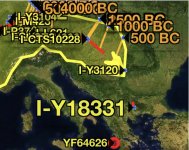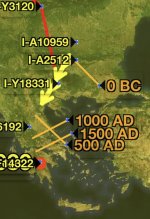According to the video Slavic ethnogenesis happened further east than where much of I2a-Dinaric is found today.
According to available evidence, CTS10228 originated further west, where we have two basal samples, one from France and one from Germany. The SNP trackers reflect the available evidence though they are just models and would be made more robust by more samples.
The split below A10959, separating Balkan people from Ashkenazi Jews, may have happened long ago enough to not have Jews and south Balkan people in each other’s subbranches. Something has to explain the distinct characteristics of each subbranch.






